OST 4
The 4th generation of surface tension tanks (OST-4) was developed for monopropellant systems.
The Propellant Refilling Reservoir (PRR) model is built up asymmetrical. It consists of a filling area (2) on the left side and a borrow area on the right (4). The main characteristics of this PMD are:
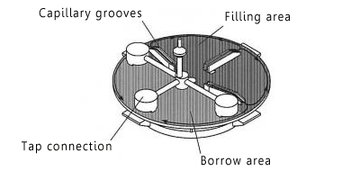
- Capillary grooves
- Filling area
- Tap connection
- Borrow area
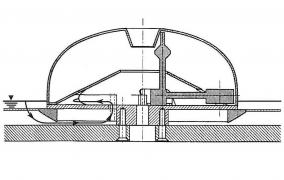
During the microgravity period the liquid flows into the PRR along the capillary grooves (1) due to capillary forces, spreads into the annular wedge and fills the filling area (2). The borrow area (4) is not filled directly. The tap connection (3) simulates the liquid adapter of the original tank. The filling area fills faster than the borrow area. The free surface which is established in the annular wedge has a curvature depending on the volume. This curvature leads to a capillary pressure. This capillary pressure sucks more fluid into the reservoir.
The goal of the OST-4 experiments was to analyze the capillary driven flow of fluids into a refillable reservoir (PPR) under compensated gravity. The temporal dependence of the filling process is of special interest. For this occasion the following three tests were performed:
Purpose: Measurement of time the liquid needs to fill the angular bottom of the PRR along vanes


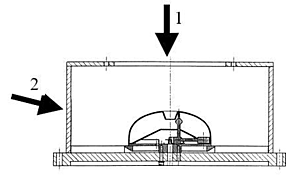
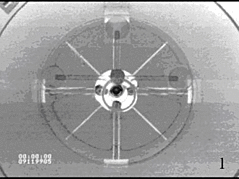
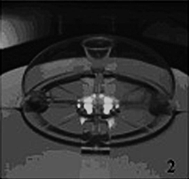
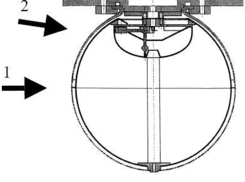
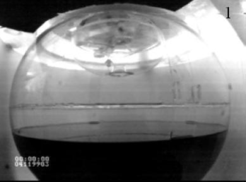
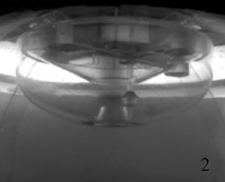
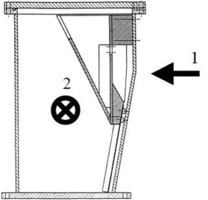
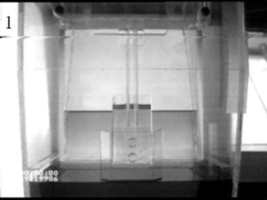
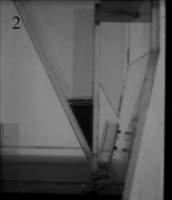
 "
"